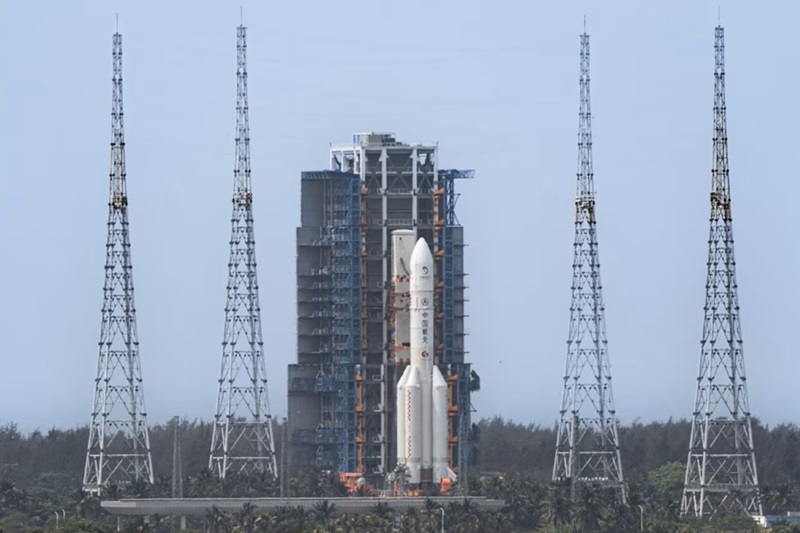
pakistan for takeoff first ever lunar mission set for launch
Today, Pakistan’s first satellite expedition to the moon, known as iCube Qamar, was successfully launched into orbit, marking a momentous occasion for the young nation. At the Wenchang Space launch site in the Hainan region of China, the satellite, which was being transported to space by China’s Long March-5 rocket, embarked on its journey into space using the Chang’E6.
The opening event was broadcast live on the website of the International Television Station (IST) as well as on the Chinese state television.
Pakistan’s First Footprint on the Moon
As the first lunar orbit mission was successfully launched, Prime Minister Shehbaz Sharif expressed his gratitude to both the country and the scientists involved. According to a statement released by the Prime Minister, the ICUBE-Q satellite represents Pakistan’s initial foray into space.
Pakistani scientists, engineers, and experienced workers are demonstrating their mettle in this field, as seen by the proficiency they displayed in nuclear technology, according to the president of Pakistan.
The core committee of the Institute of Space Technology, which included Dr. Khurram Khurshid, as well as all of the members of the SUPARCO team and students who participated in this project, were all thanked by him.
“Today’s launch from Hainan in China, is a good example of countries and organizations coming together for space cooperation and shared benefits,” stated Ishaq Dar, while congratulating students and scientists on the launch. Dar is also the Deputy Prime Minister and Minister of Foreign Affairs.
The Process of Launching
According to Dr. Khurshid, a member of the Core Committee at the Institute of Space Technology (IST), Pakistan’s satellite mission will reach lunar orbit in five days and will continue to orbit the moon for three to six months. Both of these estimates are based on the current trajectory of the project.
In addition to this, he mentioned that satellites will be utilized to capture a wide range of photographs of the moon’s surface, and that Pakistan will eventually be able to get its very own satellite images of the moon for the purpose of doing additional research. It is planned to use them for research on the moon.
In order to build and construct the satellite, the International Space Agency (IST) worked in conjunction with Shanghai University in China and SUPARCO, which is the national space agency of Pakistan. This action was taken in order to achieve the objectives that were set for the project.
To acquire visual documentation of the lunar surface, the ICUBE-Q spacecraft is outfitted with a pair of optical cameras. These sensors are designed to capture images of the surface of the moon. After the successful completion of the qualifying and testing procedures, the integration of ICUBE-Q into the Chang’e6 mission can be deemed fully concluded. China has conducted a succession of lunar exploration expeditions, the Chang’e6 mission being the sixth in this sequence. The initiative received financial support from the government of China.
The objective of the Chang’6 Lunar Mission is to gather samples from the lunar surface by making landfall on the far side of the moon. This will facilitate the achievement of the mission’s objective. Following the completion of element collection, the expedition will ultimately descend to Earth in order to conduct further investigation.
Pakistan is an essential participant in this mission on account of the iCube-Q Pakistan CubeSat Satellite, which was developed by IST, which will also be a component of this mission.
CubeSats are a subtype of satellites characterized by their standardized navigational framework, compact size, and uniform design, which set them apart from other satellite varieties. CubeSats is frequently denoted by its abbreviation, CubeSats. The fabrication process of these objects results in a cubic configuration, employing modular components that are assembled adherence to predetermined dimensions. Moreover, the components comprising the construction of these entities are modular in nature.
Small spacecraft, commonly measuring a few kilogrammes in weight, are deployed into orbit for an extensive array of objectives. Departing from Earth, these satellites are launched into outer space.
The primary purpose of CubeSats, which are specifically designed to achieve this, is to provide support for scientific research, technological development, and educational initiatives in the field of space exploration.



